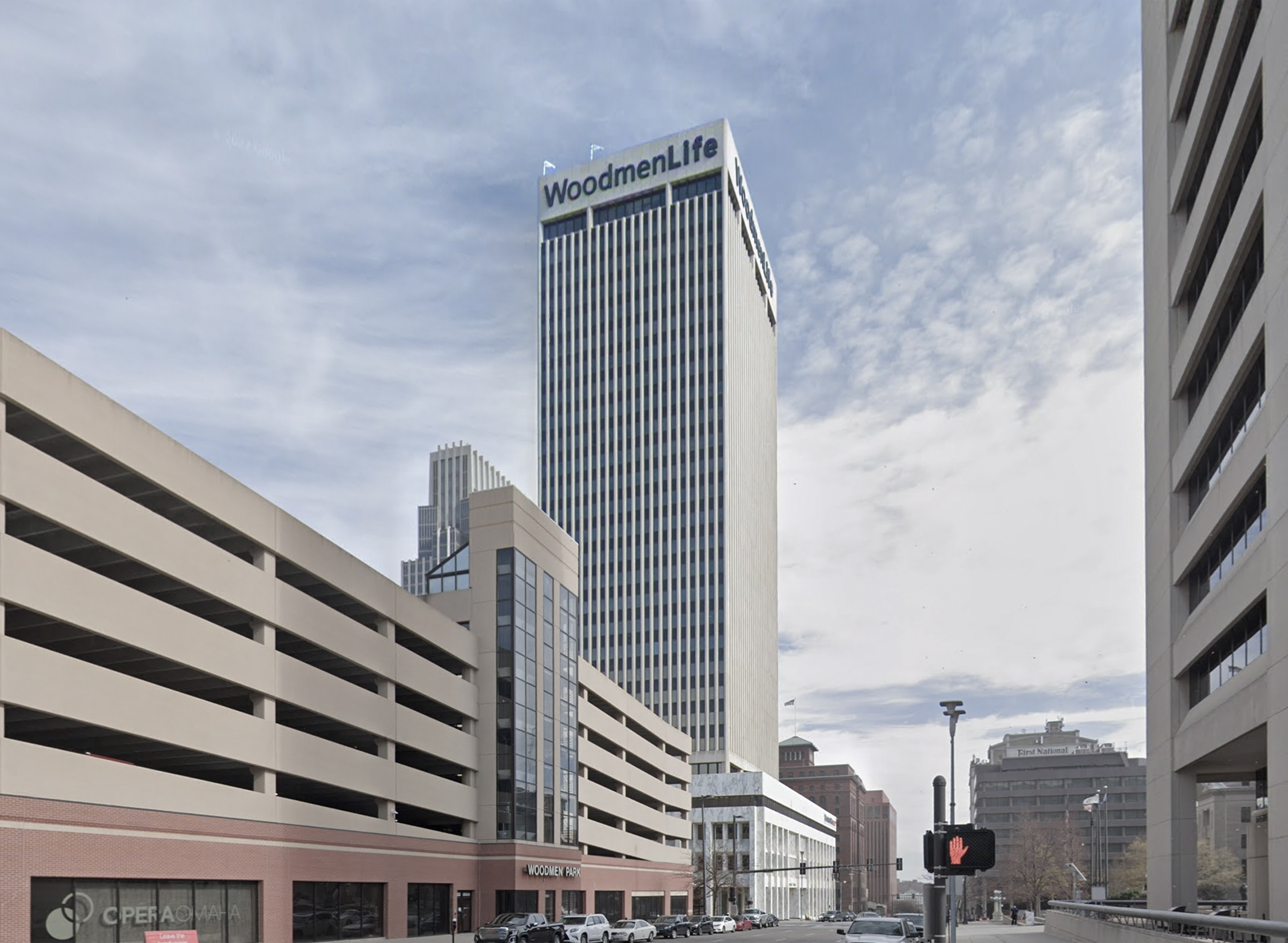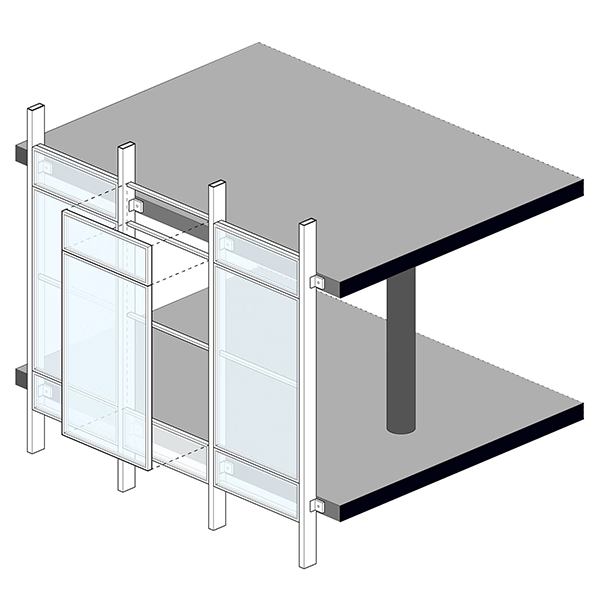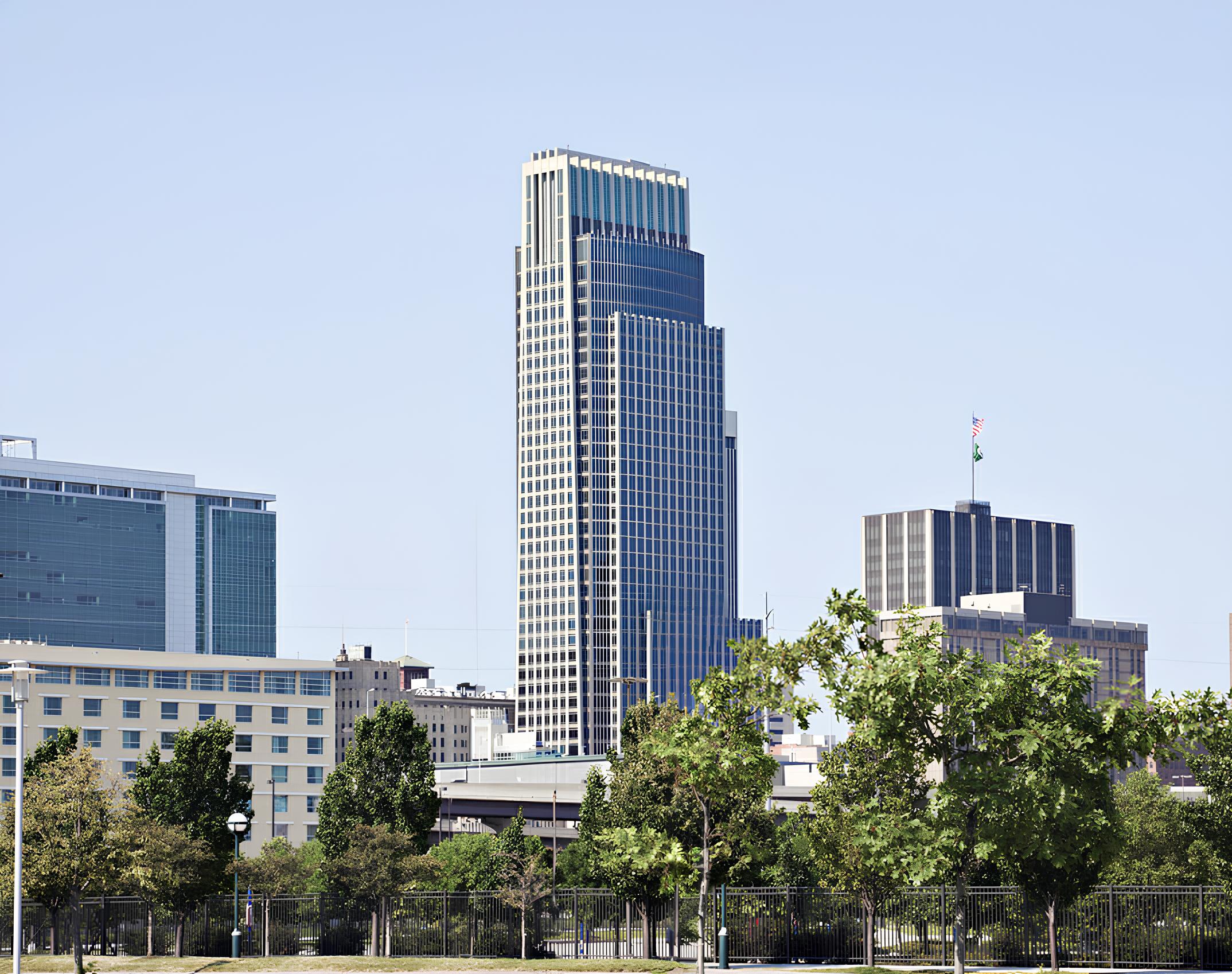The WoodmenLife Tower is an International Style skyscraper designed by Leo A Daly, and built between 1966 and 1969 in Omaha, NE.
Its precise street address is 1700 Farnam Street, Omaha, NE. You can also find it on the map here.
A distinctive feature of the tower is its LED lighting system, capable of displaying up to 16 million colors, illuminating the sky to celebrate special events and festivities..
The building has been restored 2 times over the years to ensure its conservation and adaptation to the pass of time. The main restoration works happened in 2011 and 2014.



